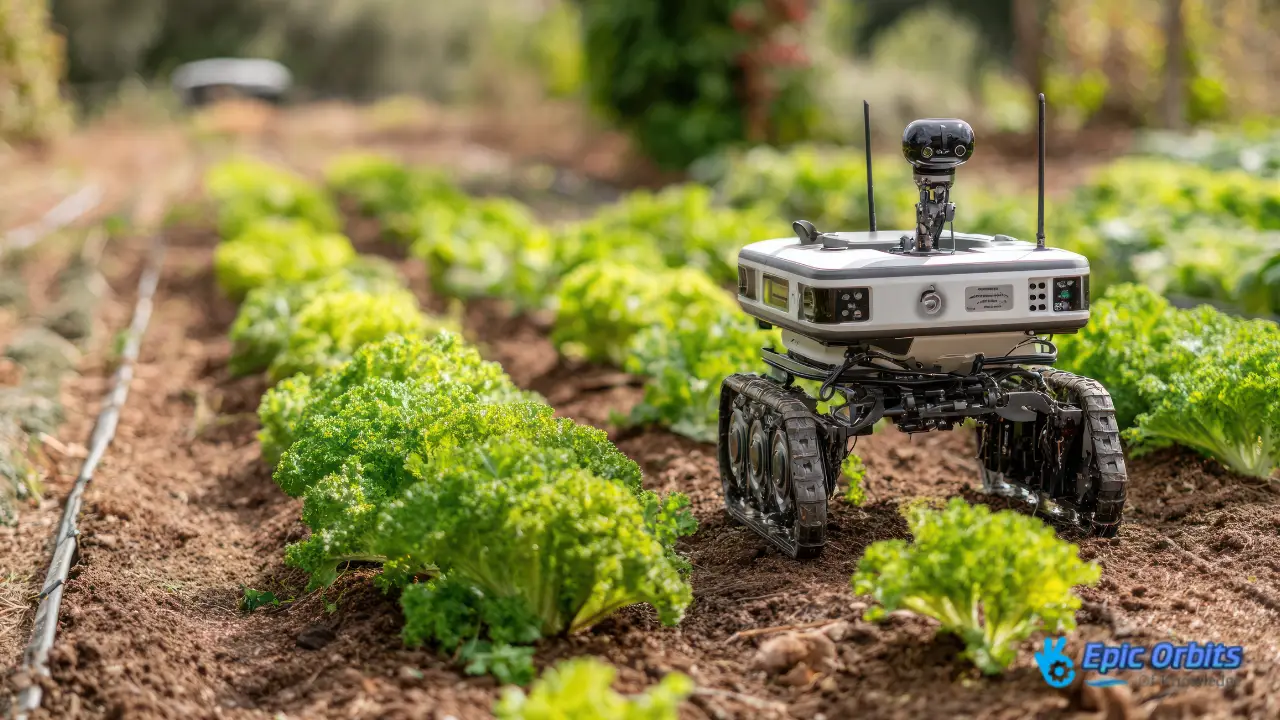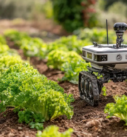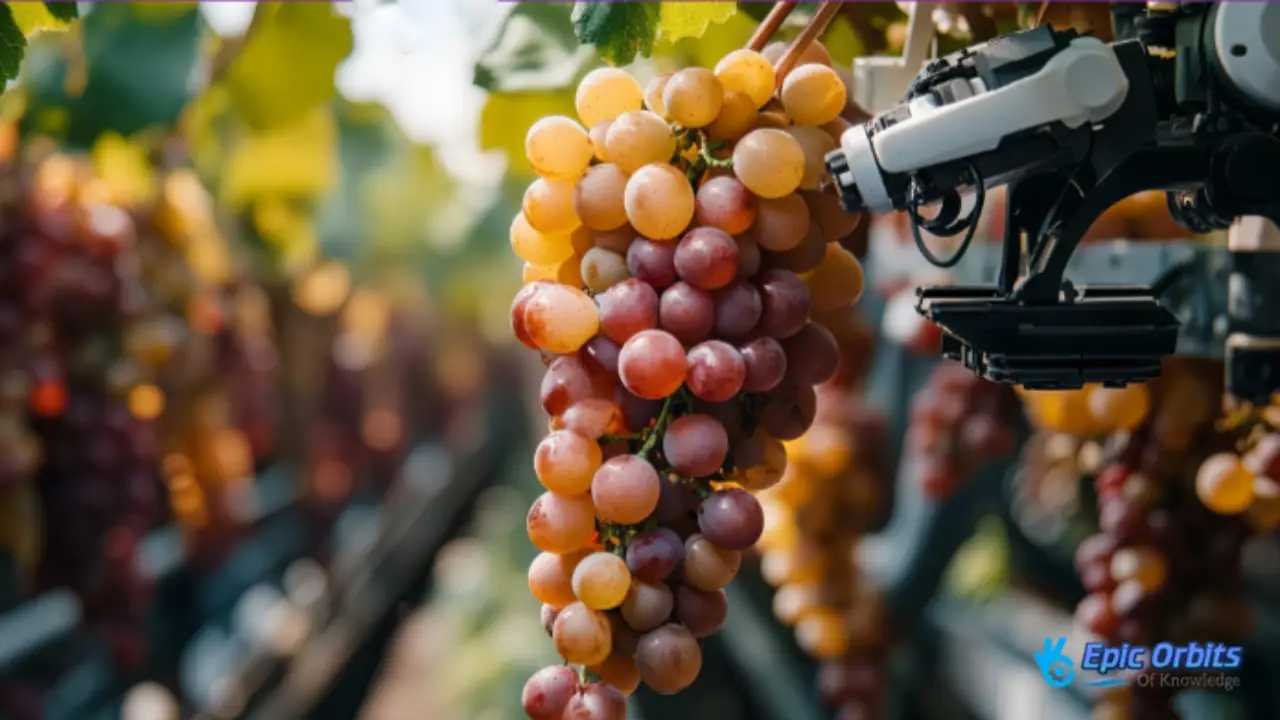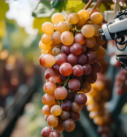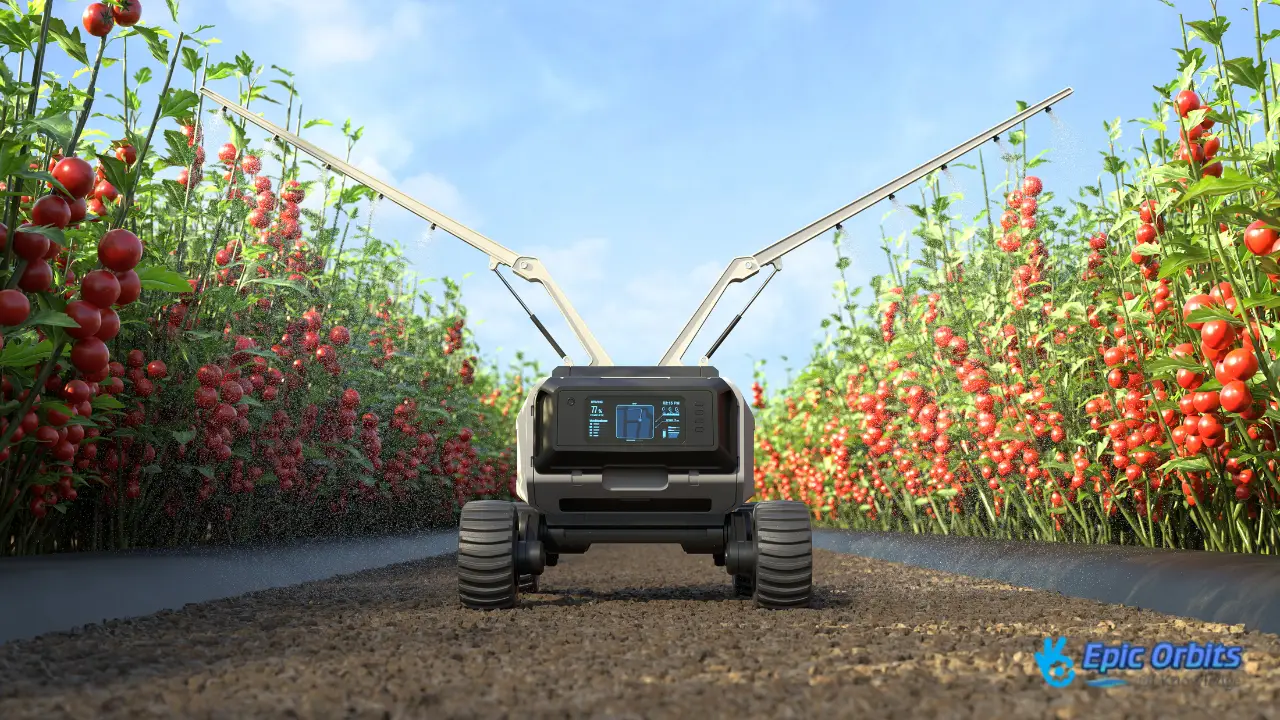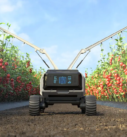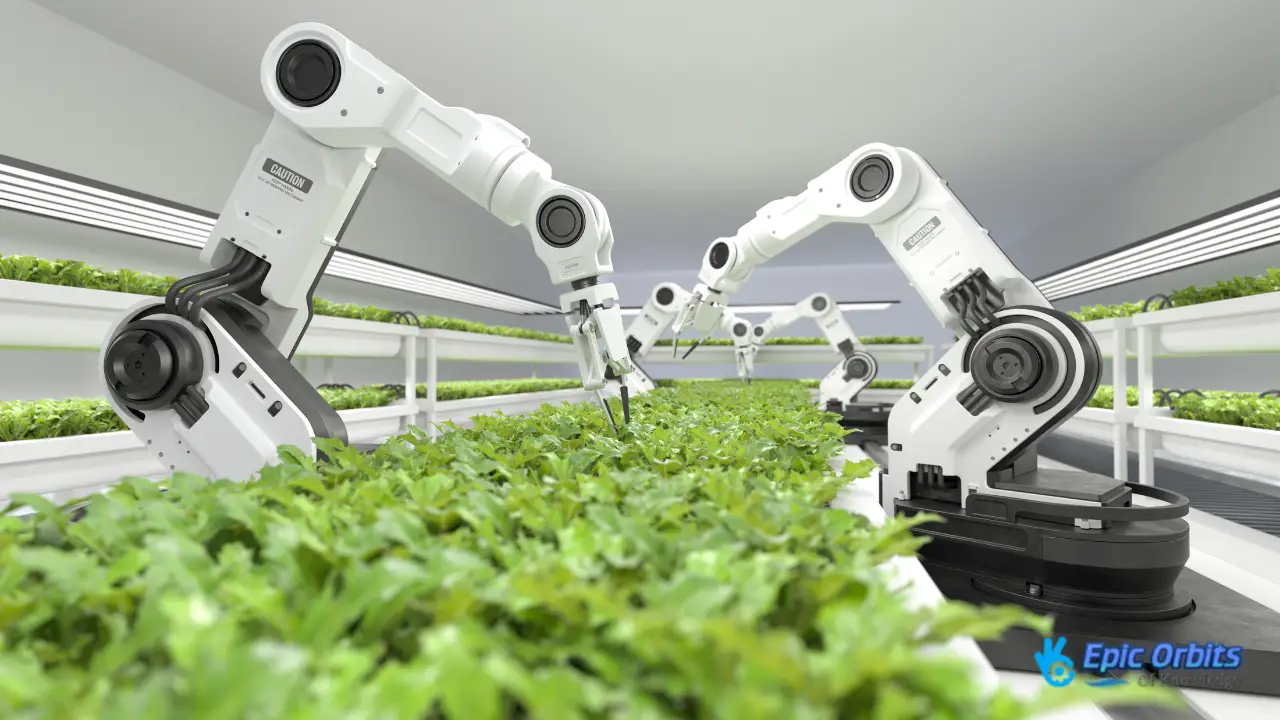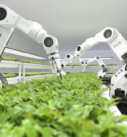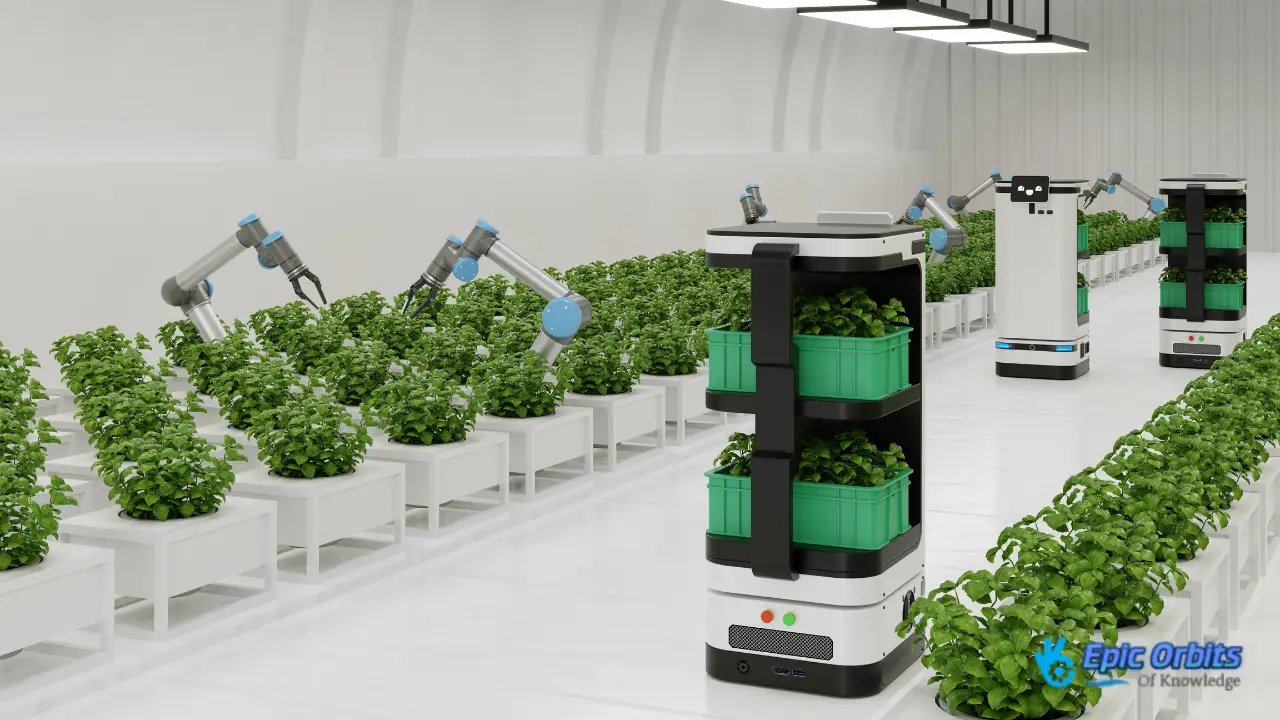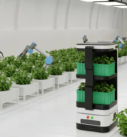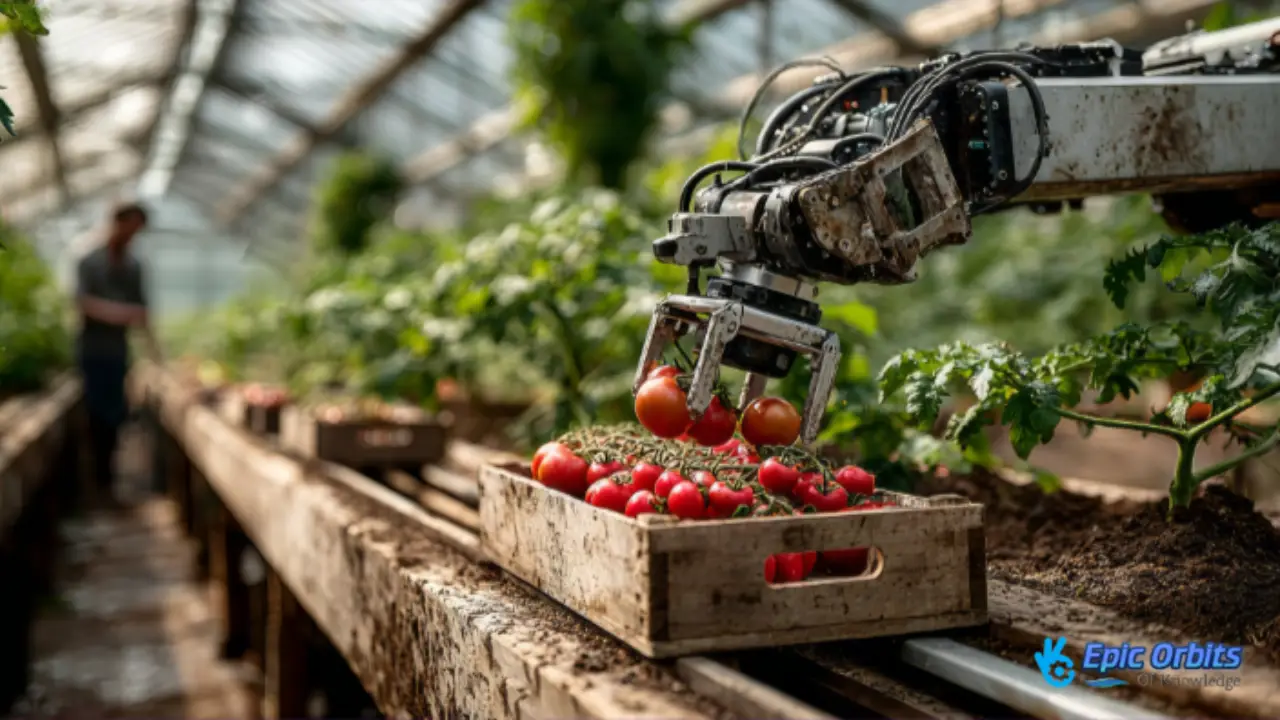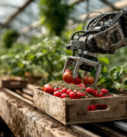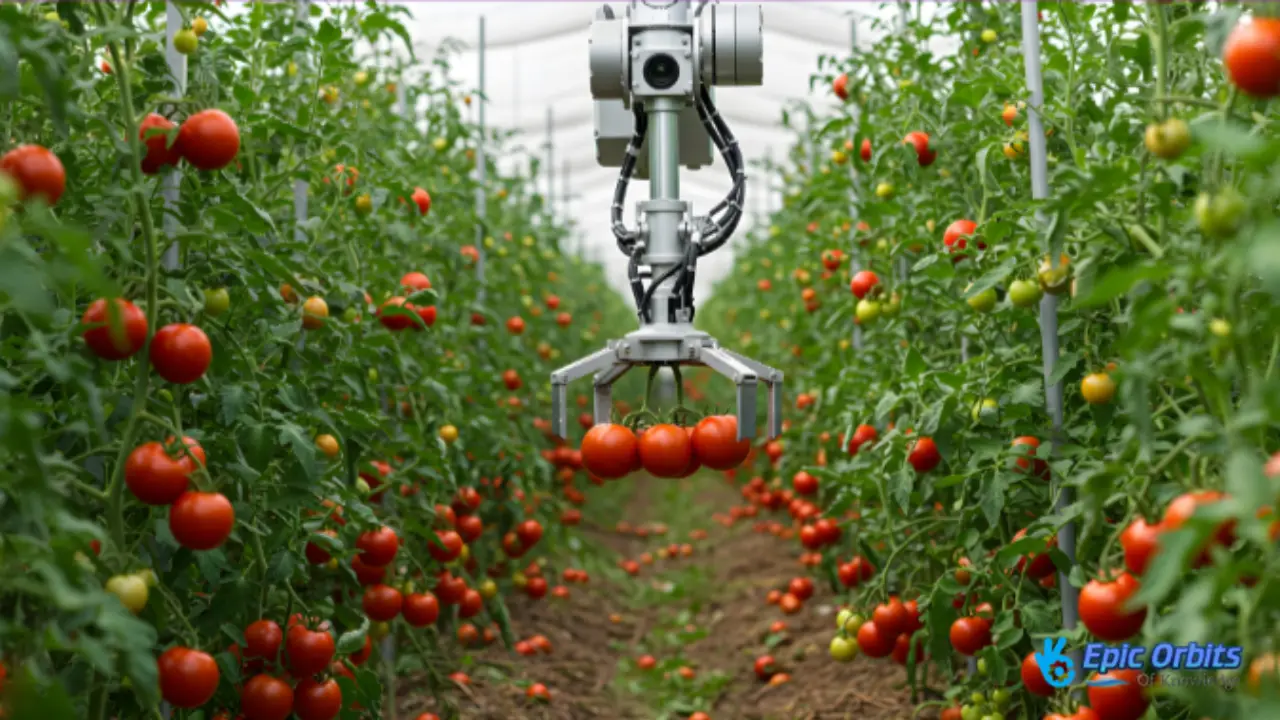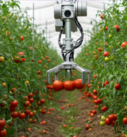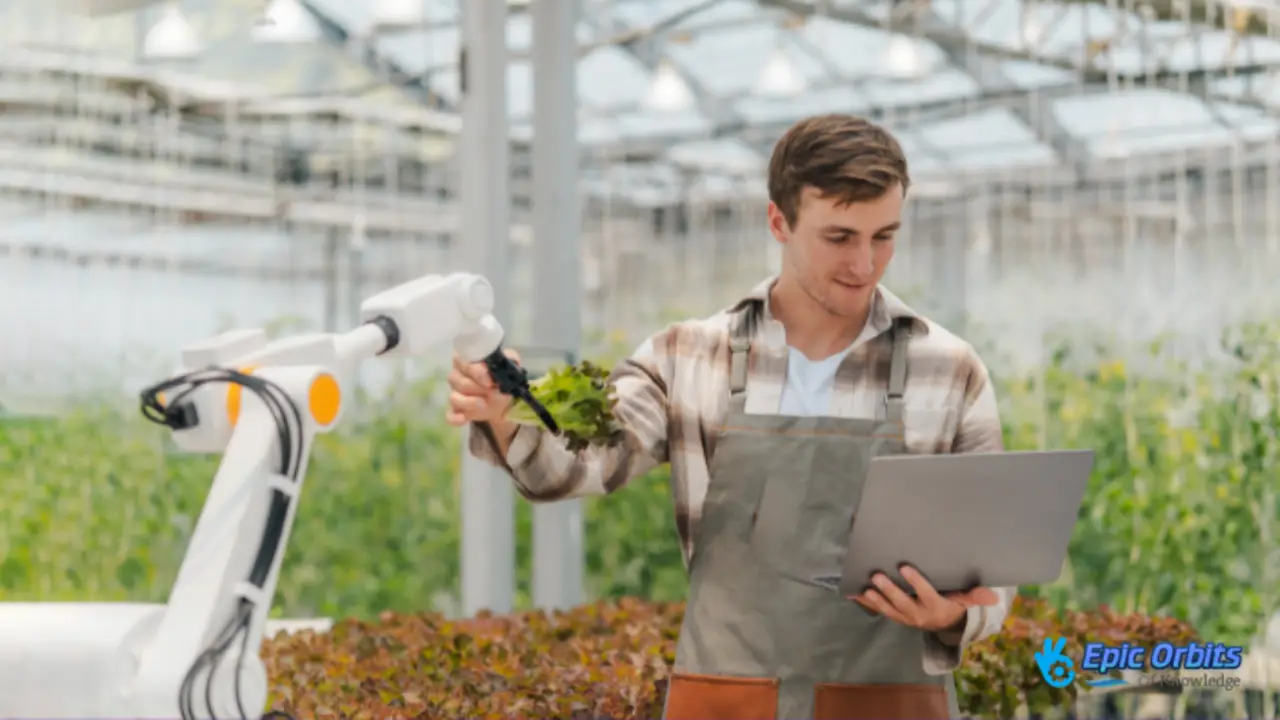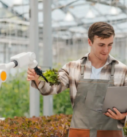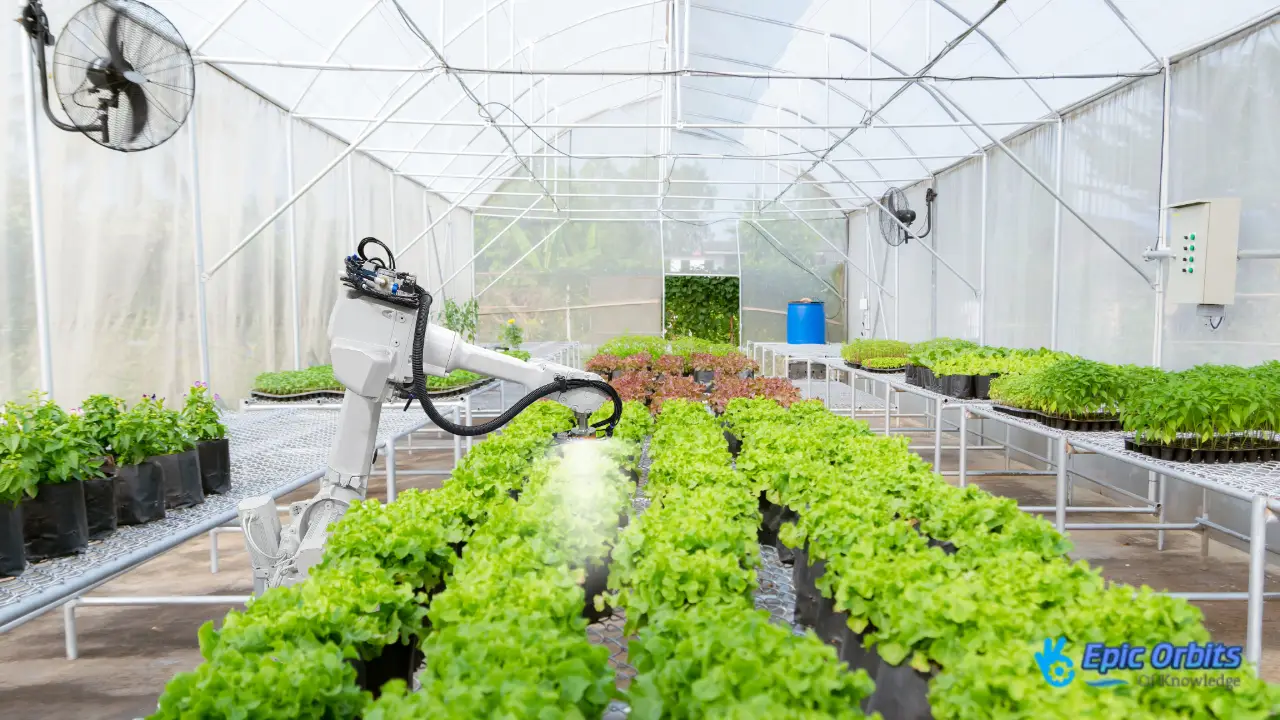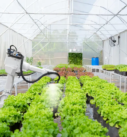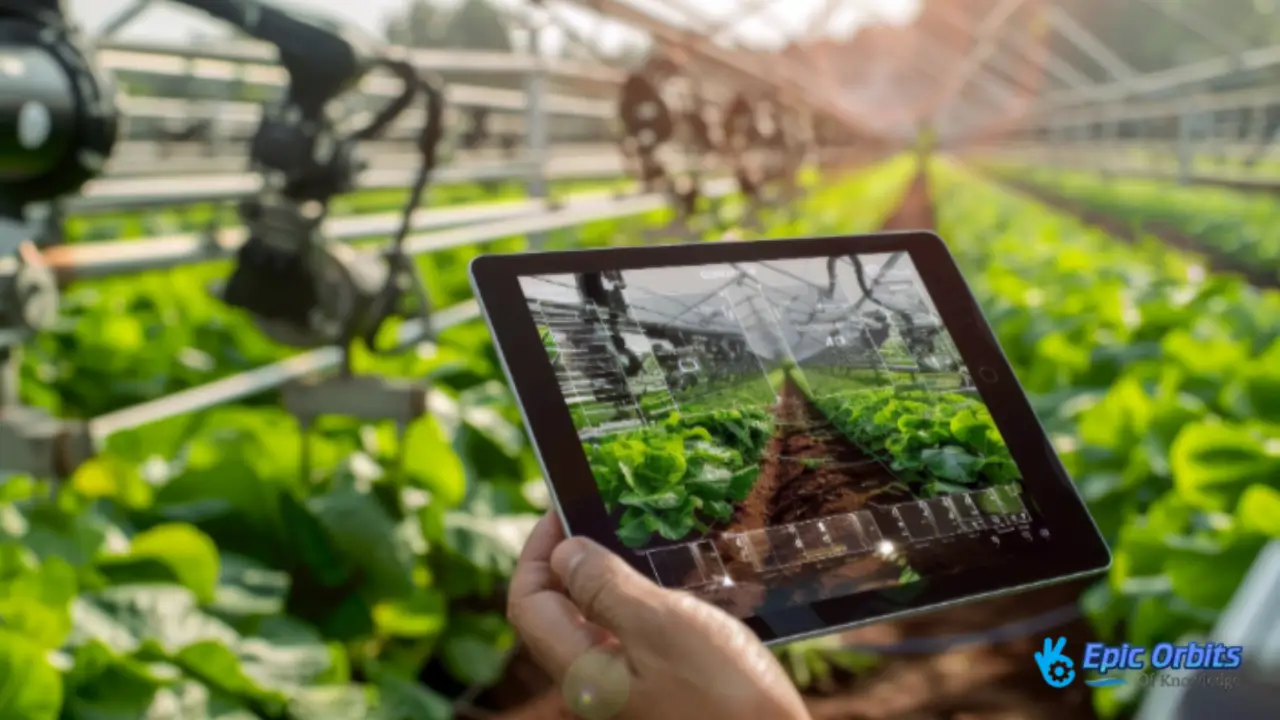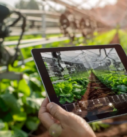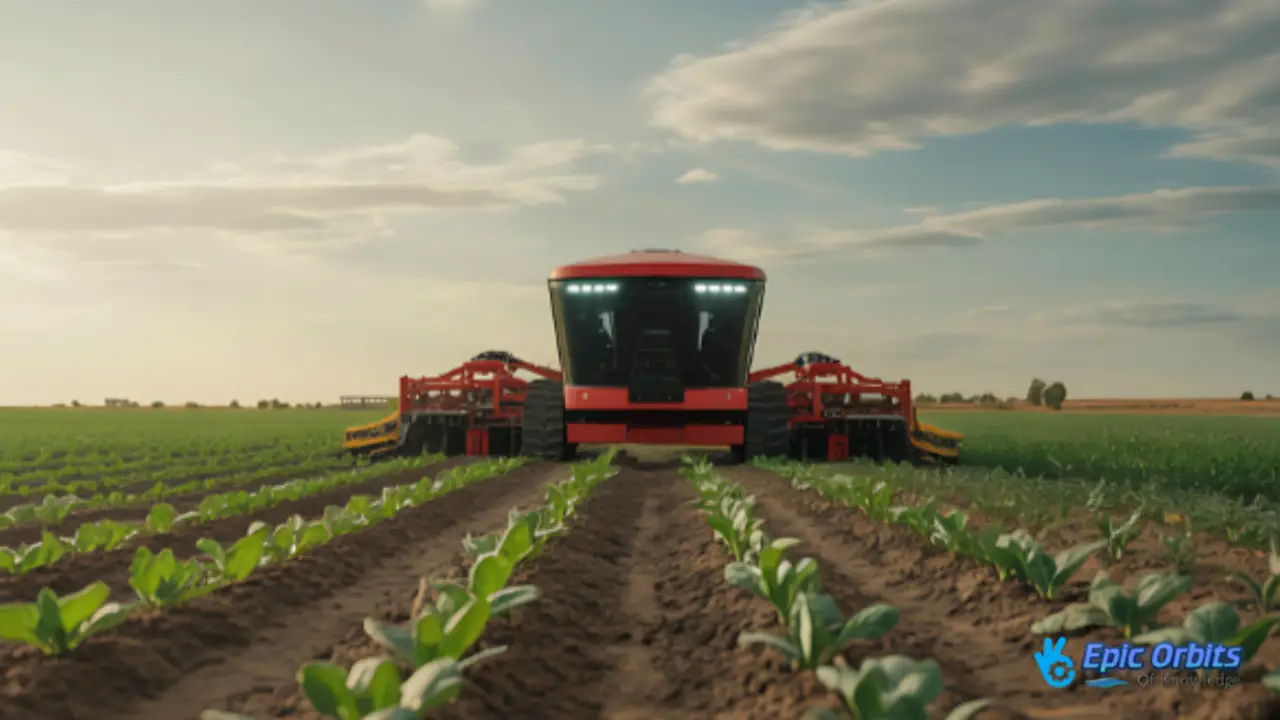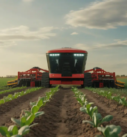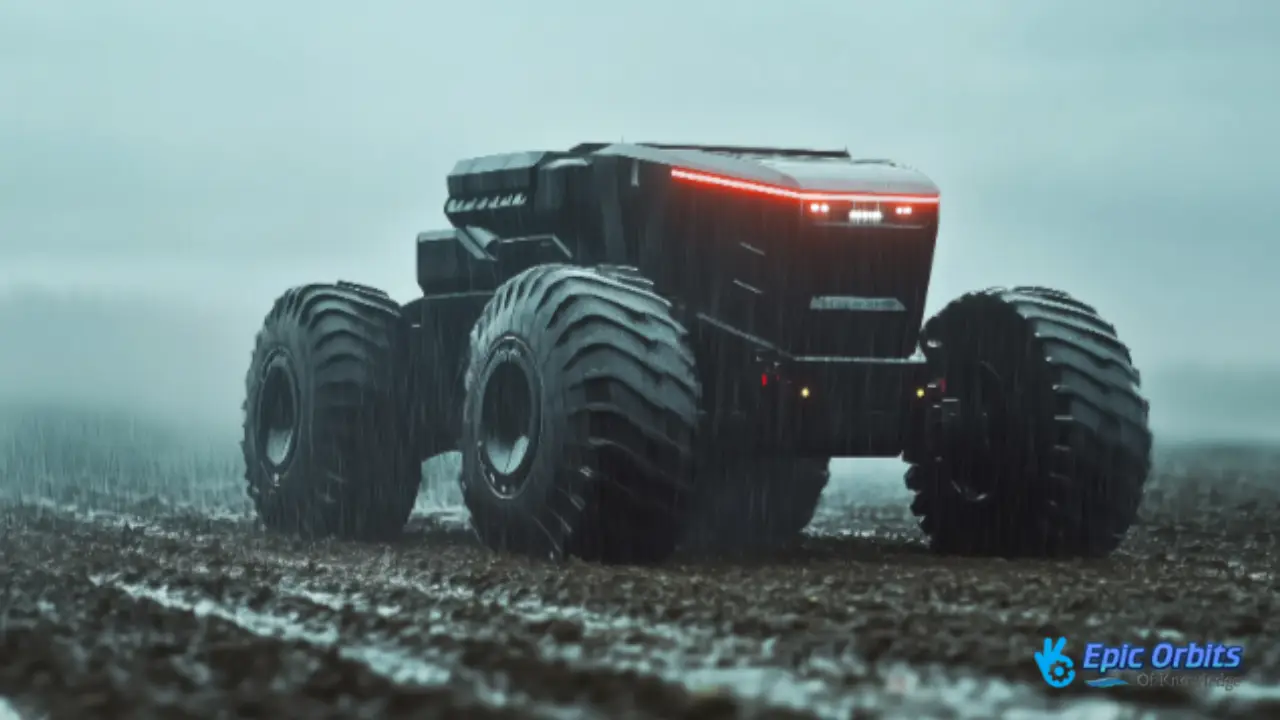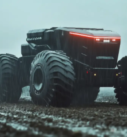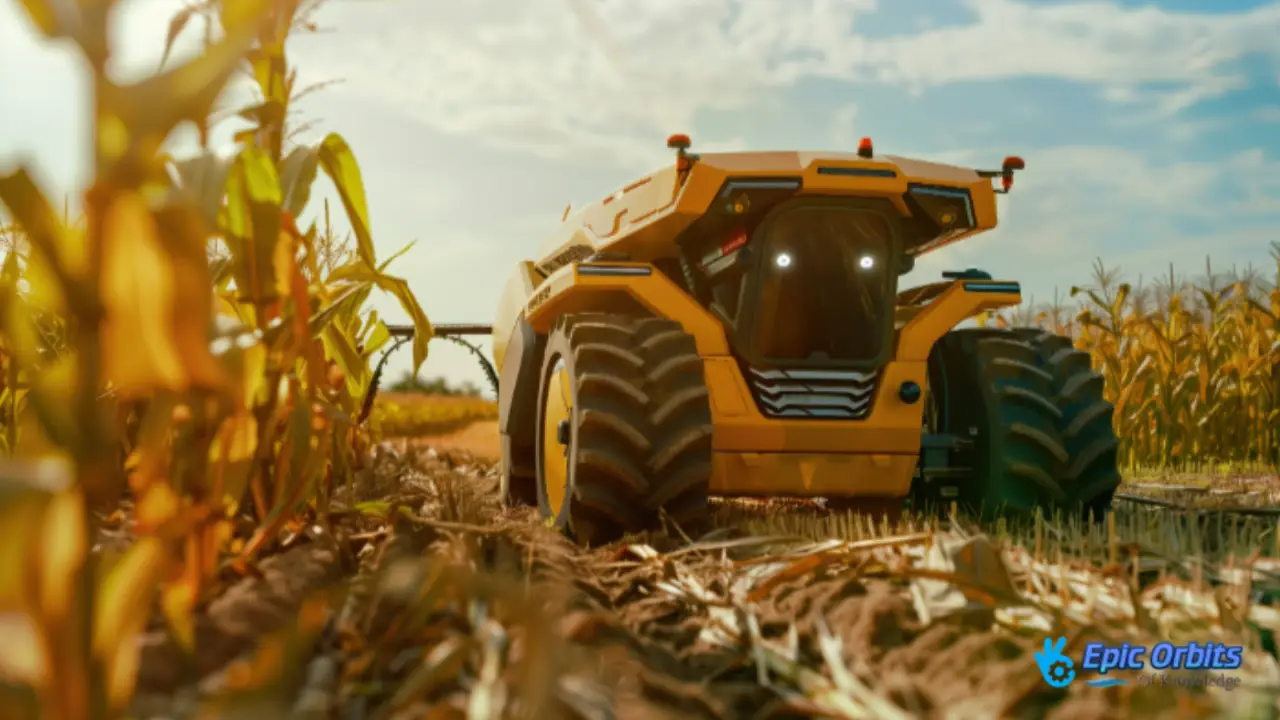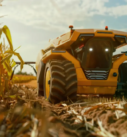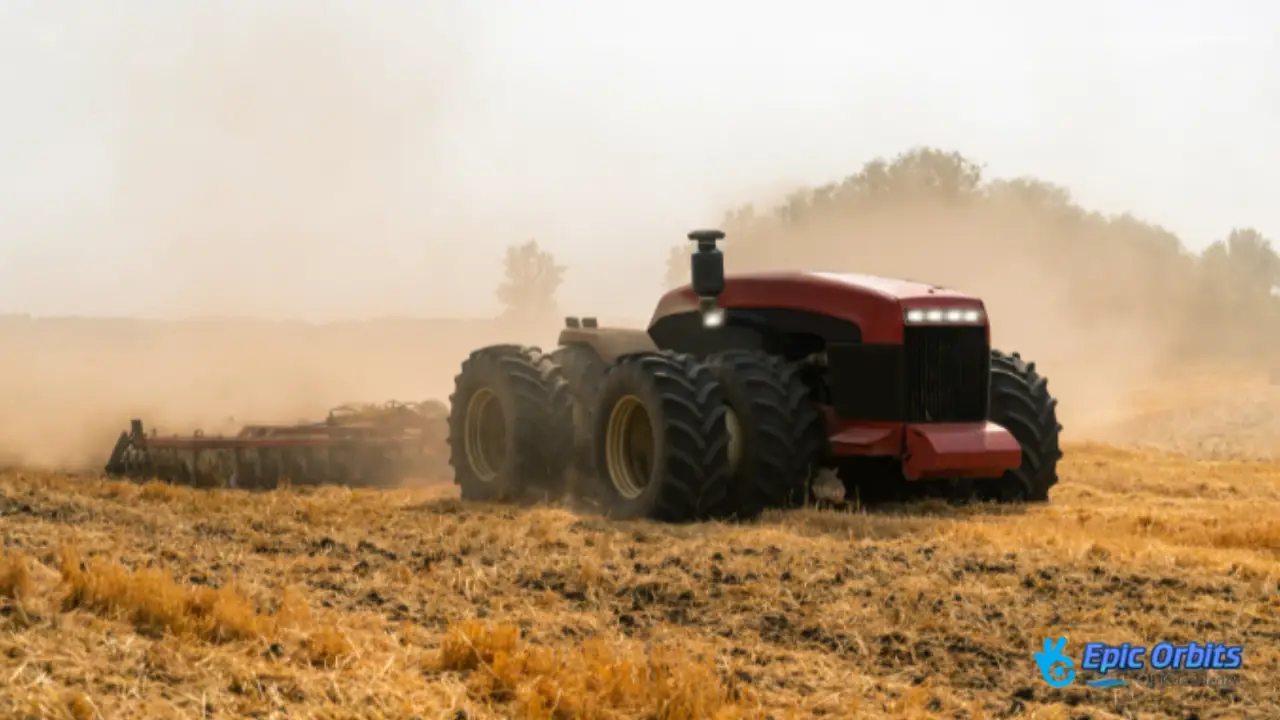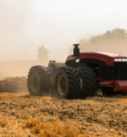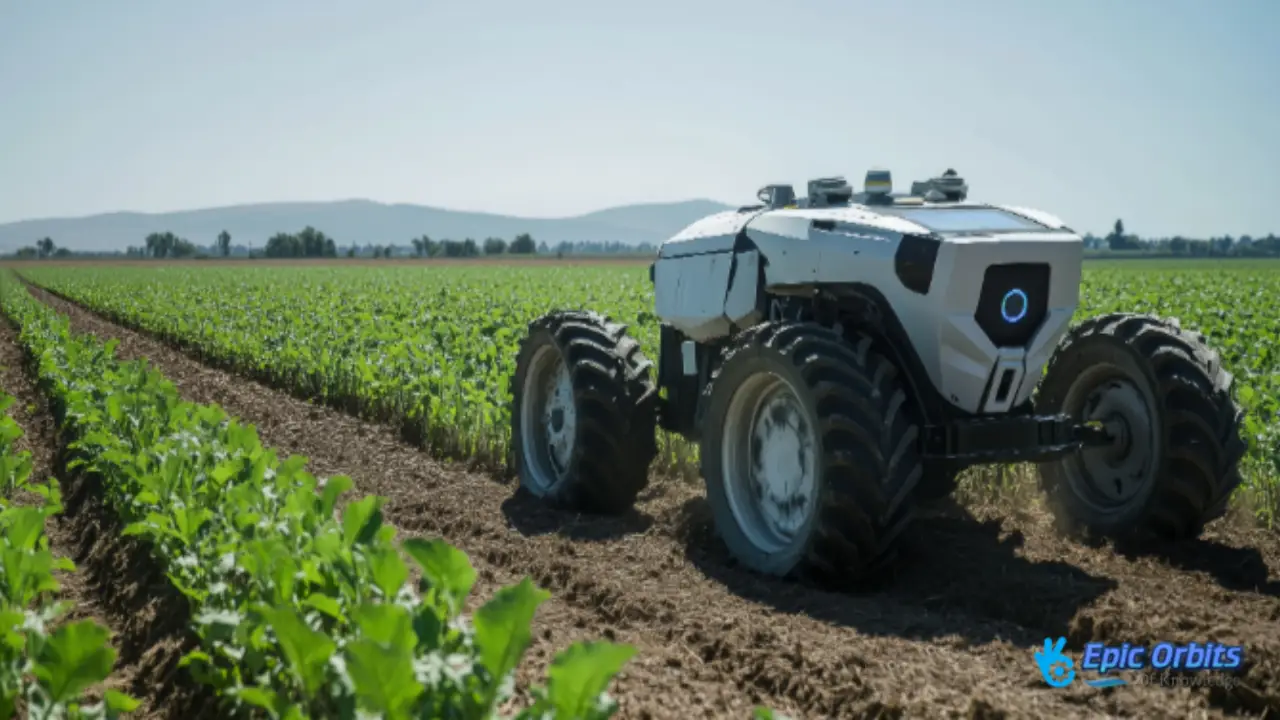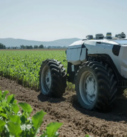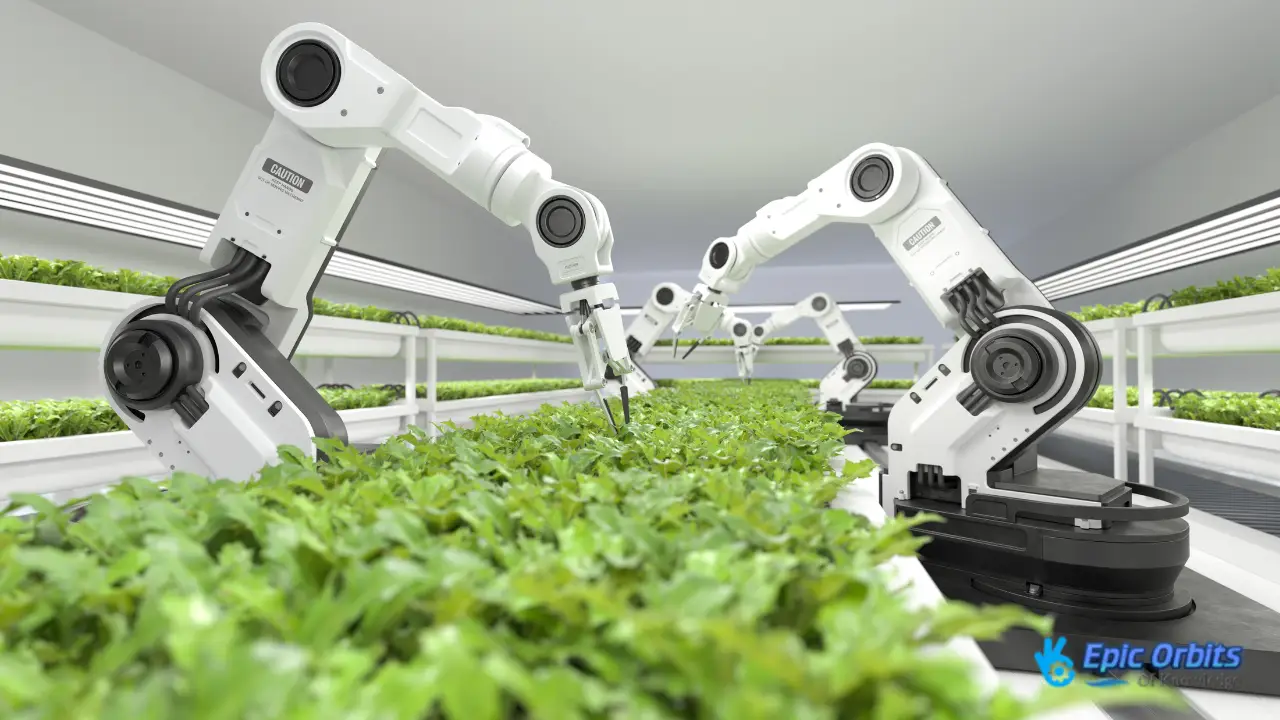How Robotics Are Shaping the Future of Agriculture
You're on the cusp of a revolution in farming. Dive into our ultimate guide on robotics and agriculture to learn more.
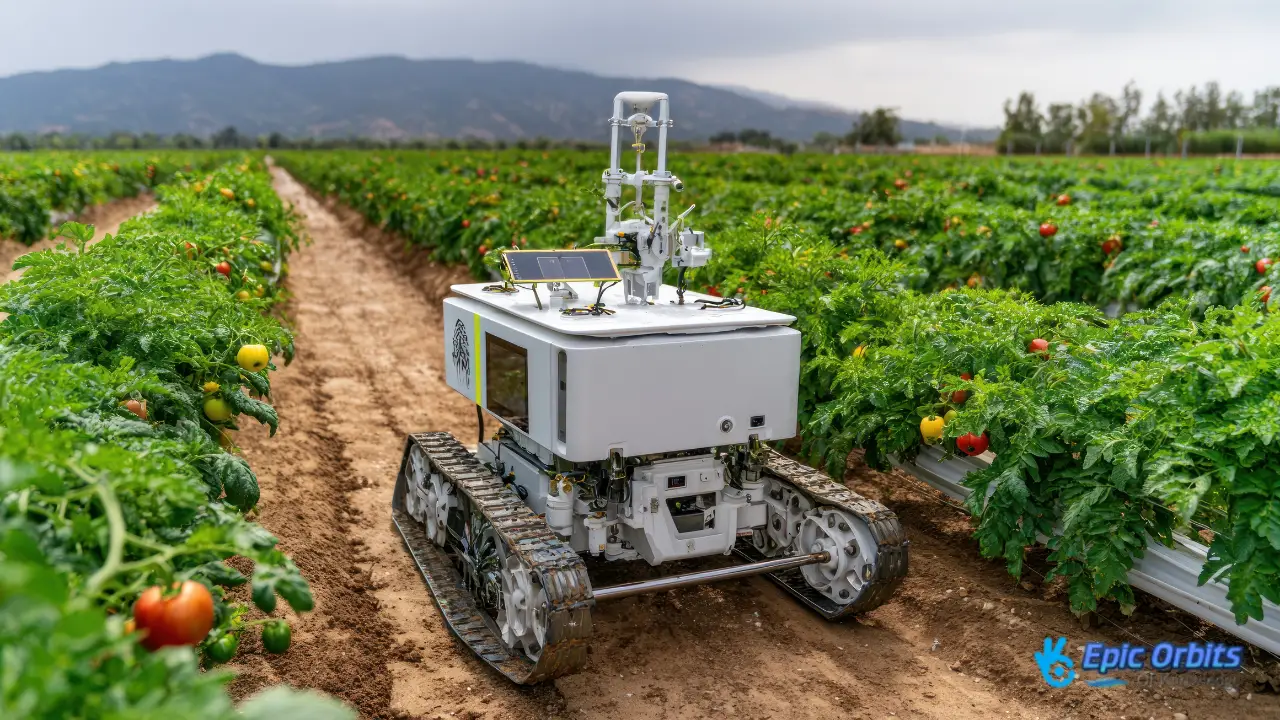
You might be seeing a revolution in the fields—literally—as robots turn farming into a high-tech business. The worldwide agricultural technology business is growing quickly. Experts say it will go from $13.4 billion in 2023 to $86.5 billion by 2033.
The necessity for efficiency and the growing cost of labor are what are driving this growth. Robots are stepping in to fill the gap as conventional agricultural techniques have trouble keeping up with the growing need for food. You're going to learn how technology is changing the way food is cultivated from seed to harvest, from self-driving tractors to drones that can sense a thirsty plant from 100 feet overhead.
The Second Agricultural Revolution: Robots and Farming
Robotics is revolutionizing farming as the world grapples to feed its growing population. There aren't as many people working in agriculture, so farmers are having a difficult time harvesting all of their crops, and a lot of them are decaying in the fields. Farmers need to be able to do their jobs with less help from others to be successful.
1. How farming technology has changed throughout time
Farming technology has come a long way, from basic implements to high-tech machines. Adding robots to farming is a big step toward making things more efficient and productive. A top specialist in agricultural technology adds, “Using robots in farming isn't just a trend; it's a need because there aren't enough workers and precision agriculture is needed.” This shift is transforming the agricultural environment, enabling farmers to meet the increasing demand for food.
2. Why Robots Are Going to Work
There are several reasons why farmers are starting to use robots. A big worry is that there aren't enough workers since fewer people want to work on farms. Using robots is also a beneficial idea from an economic perspective since they don't need health insurance, overtime pay, or lunch breaks, which lowers expenses overall. Robots can also function in unforeseen situations and adapt to new settings, which makes them perfect for dealing with the problems that climate change brings.
- You may be wondering why robots are now being utilized on farms. The solution is that we need to address labor shortages and make things more efficient right now.
- Farmers are using robots to help them feed the world's 9.7 billion people by 2050.
- Robots can operate in settings that are difficult to forecast, which makes them perfect for dealing with climate change problems.
Farmers can use robots to solve their current issues and make their work more efficient and productive, which will help them meet the need for food sustainably.
The most important ways robots are changing modern agriculture
There aren't robots on every agricultural field now, but they are becoming more common and using new technology. Here are some future changes you can expect from agricultural robots.
1. More Accurate Nutrient Applications
Farmers typically utilize statistics to help them decide when to use fertilizer. You can figure out how much of each nutrient to put in the soil by testing the soil and figuring out what the crops require. But gathering this information and using it are usually two separate things.
That might change with robots. Hydroponic farms currently use automated fertilizer dosing systems. These systems employ technology to check the nutrient solution's pH and electronic conductivity (EC). They then use this information to provide the right quantity of nutrients. People still have to establish the dosage rates depending on the crop, but these systems do away with the requirement for people to evaluate the solution and administer fertilizer by hand.
Nutrient runoff isn't a huge issue in hydroponic systems, but it may be a concern outside. Too much fertilizer not only costs money but also hurts the environment because the extra nutrients wash away into rivers. Using precise fertilization may help keep nutrients from becoming too high.
There are several ways that agricultural robots may assist in applying nutrients. Some robots feature cameras and sensors that let them swiftly scan a field and identify spots where nutrients are lacking. They may also utilize sensors to find out how much moisture, pH, and nutrients are in the soil. Others may utilize this information to provide the right quantity of fertilizers to the crops that require them.
2. Less Need for People to Work
Despite the advancements in technology, a significant amount of farming work still requires human labor. Some of the things that farmworkers do include planting, weeding, harvesting, and trellising.
Agricultural robots may eliminate the need for some of this work. Businesses are developing robots that use lasers to destroy weeds. These devices autonomously traverse fields, distinguishing between weeds and crops. Then they utilize lasers to blast the little weeds, destroying them without applying pesticides or harming the soil.
Part firms are also focusing on making robots that can help with farming by doing part of the task of harvesting. This is a challenging job since fruits and flowers have to be picked at a certain stage of development or color. Additionally, these crops are fragile and susceptible to damage during harvesting.
Some robots can tell what color a fruit is, choose the ripe ones, and gently pick them off the vine. This might make it less necessary for people to work in an industry that now depends significantly on it.
3. Fewer Hours in the Tractor
GPS technology is making it easier for autonomous tractors to work on vast farms. These machines can drive themselves around fields, making the right turns and doing things like planting, growing, and harvesting.
Farmers will spend less time on tractors because of these technologies. This will free up time for them to talk to clients and spend time with their family.
These tractors are costly; thus, not many farmers can afford them. Small and medium-sized farmers will probably continue to use tractors that are operated by people until these new technologies become cheaper.
4. Exact Pest Control
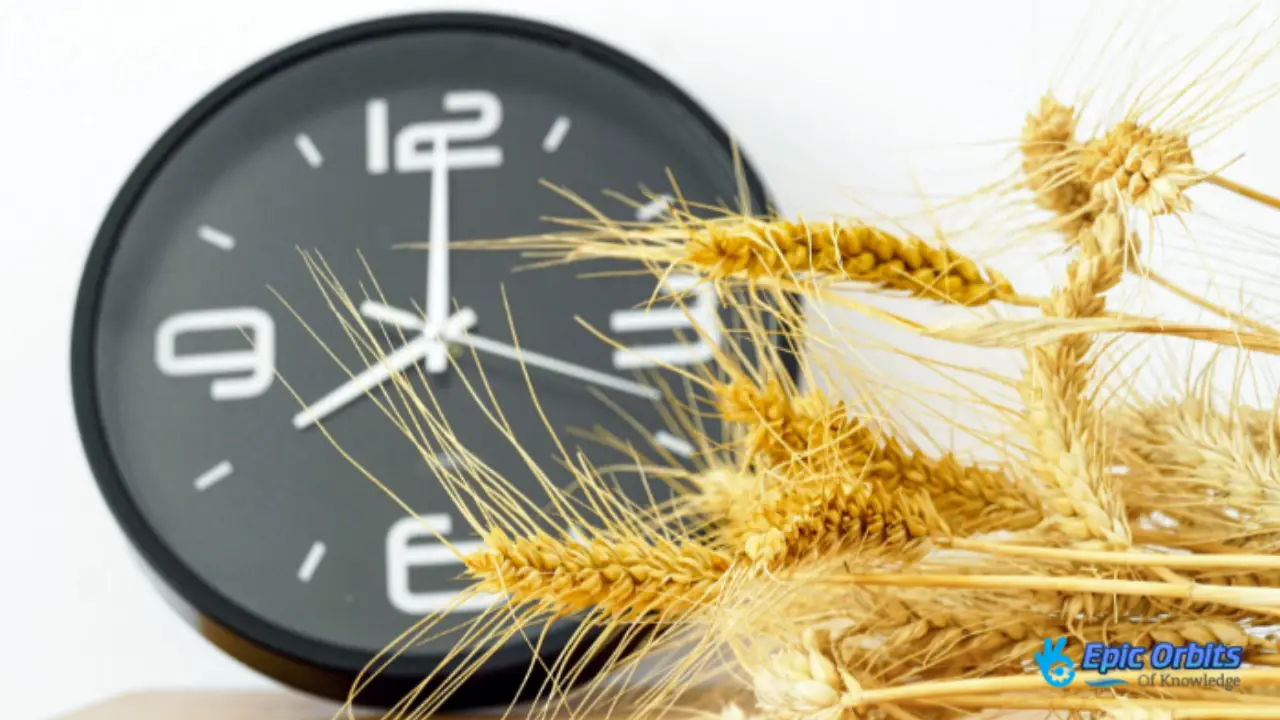
It may take a long time to scout fields for pests, particularly if you have a lot of land or many different kinds of crops. Many farmers use scouting and the economic threshold to decide whether they should use pest management right now. However, robots could change this process significantly.
Some farming robots can scan fields and spray pesticides or beneficial predators precisely where pests are located. This cuts down on the need for big treatments, which saves farmers money and keeps them from using pesticides that aren't needed. The results may also indicate that crops are healthier and the harvests are better.
5. Less Use of Water
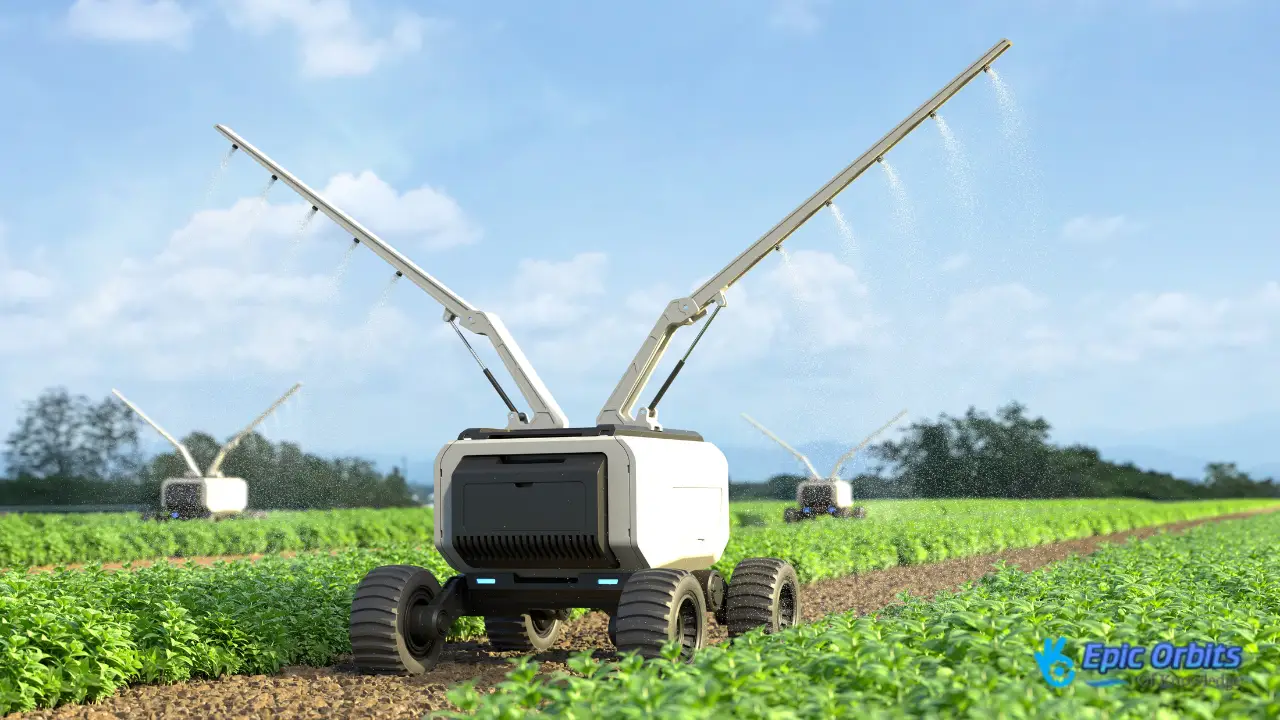
Like robots that check pH and pests, devices can check soil moisture. When you use this moisture data with irrigation systems, farm robots can water the plants that require it at the right moment.
Precision irrigation systems may irrigate a few hundred strawberry plants or a single row of orange trees instead of an entire field or block of plants. This system keeps plants healthy while limiting water consumption.
These irrigation robots might have a big effect on places where water is difficult to come by. If farmers can get away with using less water, they may be able to keep growing crops in places where water is difficult to come by. Another debate is whether or not it is appropriate to continue doing large-scale, water-intensive farming in these places.
Different kinds of agricultural robots are changing farming
Robots are altering farming by coming up with new ways to solve problems that have been there for a long time. It's not simply a fad to use robots in farming; it's a revolution that is changing how we grow and take care of crops.
1. AMRs, or Autonomous Mobile Robots
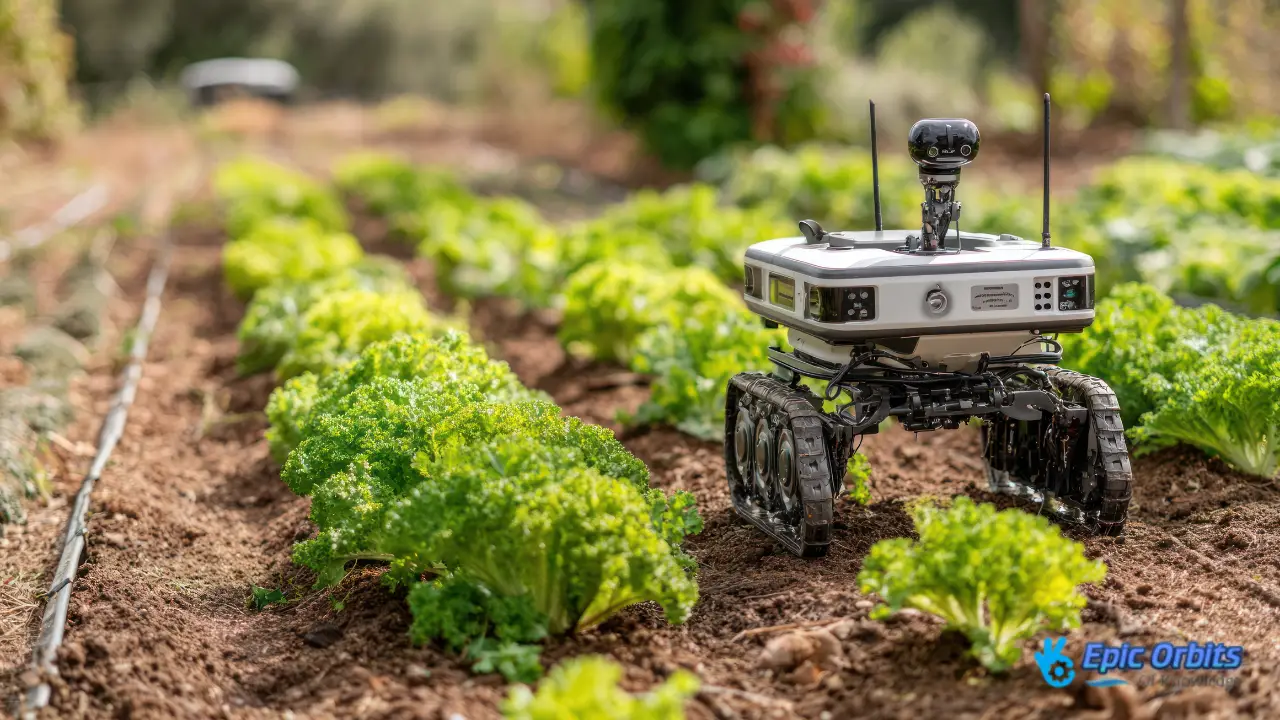
Farmers are increasingly utilizing Autonomous Mobile Robots (AMRs) to perform tasks such as monitoring crops and removing weeds. These robots move around fields gathering important information that helps farmers make smart choices.
2. Robots with six axes of movement
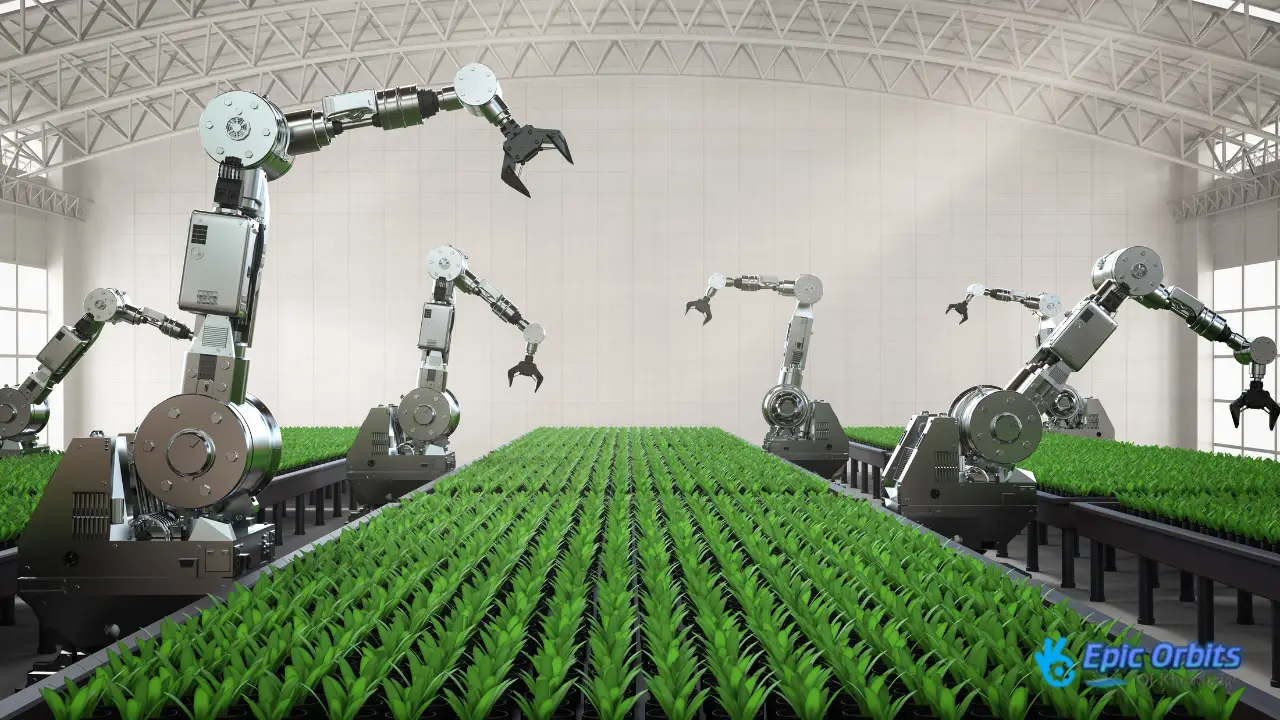
Six-axis articulated robots are flexible and may be utilized for many agricultural operations, such as cutting and harvesting. They are very useful in contemporary farming since they are accurate and flexible.
There are many things to think about when choosing an industrial robot for your manufacturing process. When automating an application, you should think about the kind of robot, its size, its payload capacity, its reach, and its axis.
These are some of the most important things that identify an industrial robot. Articulated robots may have anything from two to more than 10 robotic axes.
Most industrial robots have four to six axes, and six-axis robots are the most common in production. A six-axis robot isn't always the best choice for every job. In certain circumstances, a robot with fewer degrees of freedom, such as a four-axis robot, is superior. This situation makes me wonder how four-axis and six-axis robots are different from each other.
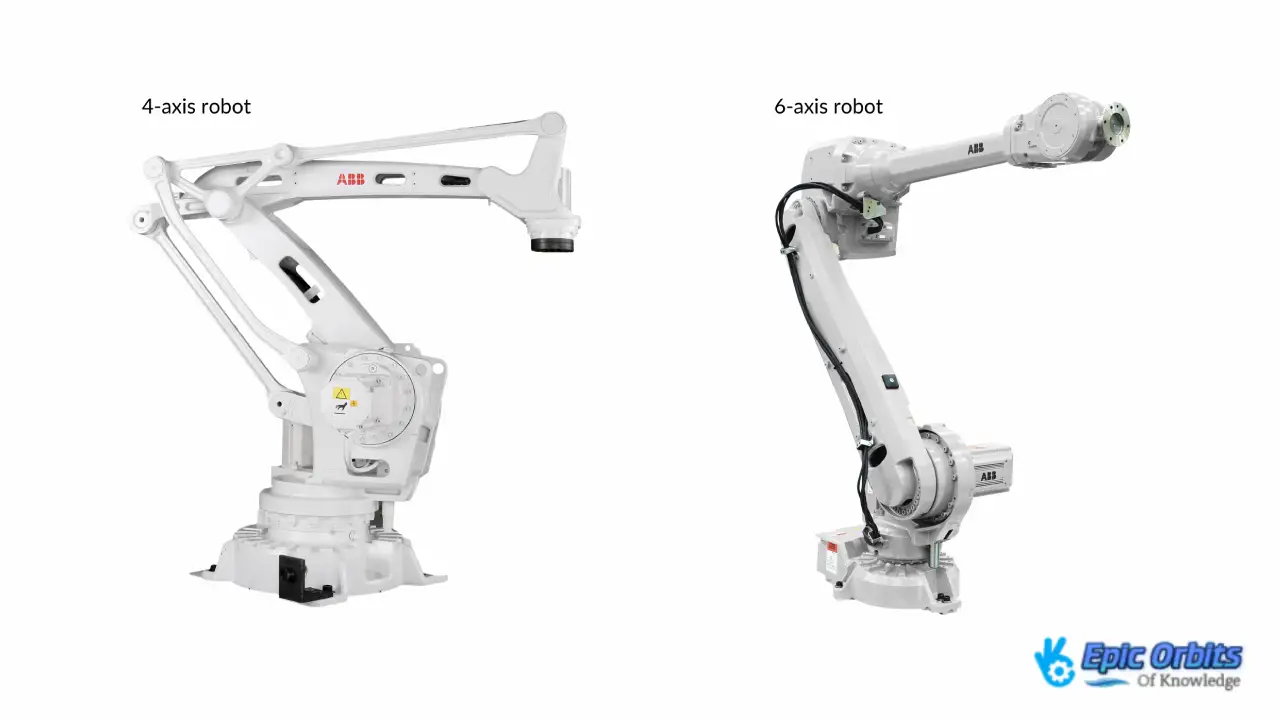
✅ Getting to Know 6-Axis Robots
People know that 6-axis robots, or articulated robots, are very flexible and can move their arms and legs in many ways. These robots have six axes of movement, which is like how a human arm moves. The axes are
- Base Rotation: The robot's arm rotates at its base.
- Shoulder Rotation: The robot's arm moves up and down.
- Elbow Rotation: The lower arm moves side to side.
- Wrist Roll: Twisting the wrist.
- Wrist Pitch: Moving the wrist up and down.
- Wrist Yaw: Moving the wrist from side to side.
This ability to move in many directions lets 6-axis robots go into tight areas, go past obstacles, and do complicated jobs with accuracy. Aerospace, automotive, manufacturing, and machining companies use 6-axis robots a lot for jobs like welding, painting, assembling, and complicated machining.
✅ Comprehending 4-Axis Robots
4-axis robots, often known as SCARA (Selective Compliance Assembly Robot Arm) robots, are known for their simplified design and limited range of motion. These robots may move in four different directions, which are usually
- Horizontal Base Rotation: The base of the arm rotates.
- Vertical Arm Extension: Moving the arm up and down.
- Elbow Rotation: Moving the arm from side to side.
- Wrist Rotation: Moving the wrist around.
4-axis robots don't have the same range of motion as 6-axis robots, but they are better for tasks that need accurate horizontal movement and fast operation. Common uses in the electronics, food and drink, and pharmaceuticals sectors include pick-and-place jobs, packing, assembly line work, and moving materials. And farming, too.
3. Drones and aerial systems
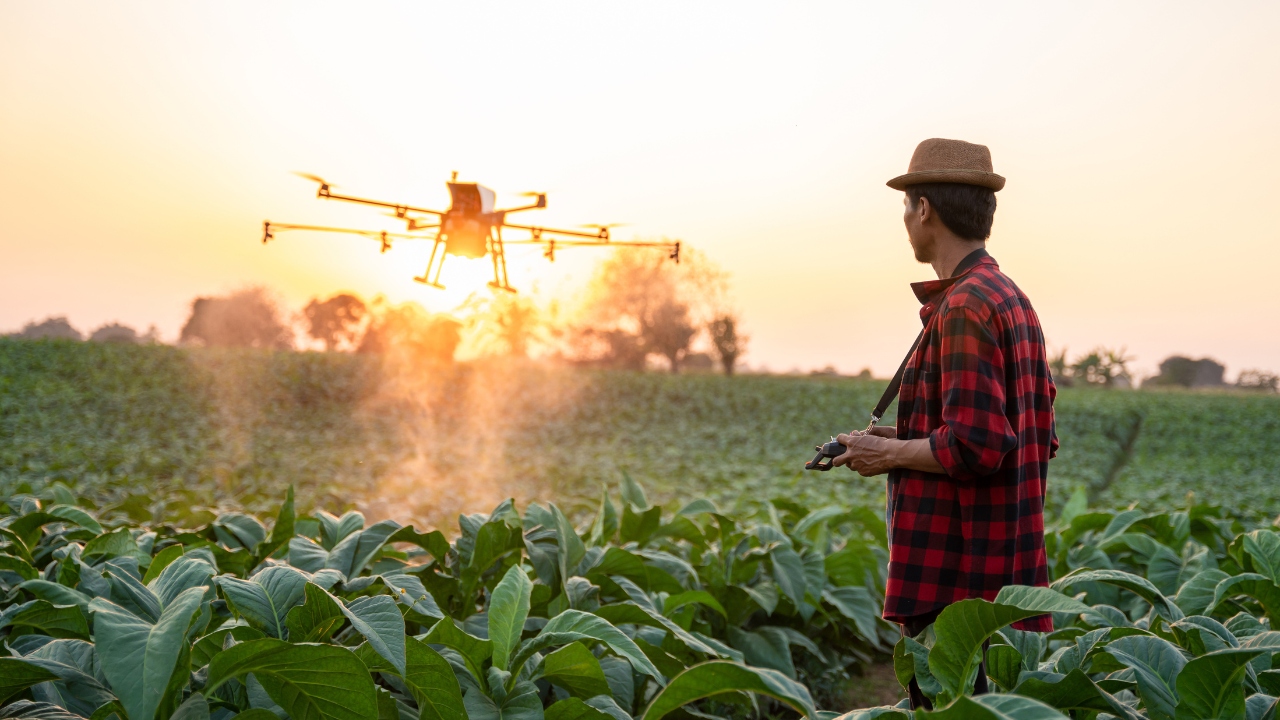
Drones are basically flying farmers who use modern sensors to look at crops. They take high-resolution pictures that help keep an eye on the health of crops, find insect infestations, and figure out the best way to water them. Customers may save a lot of time using aerial imaging because it gives them a bird's-eye perspective of their crops, which lets them quickly check the health of the plants and the development of weeds.
- You may think those buzzing things in the sky are simply bothersome toys, but agricultural drones are like flying agronomists who scan your crops with more sensors than a hospital's worth of medical equipment.
- Drones are taking high-resolution pictures of your plants from above, literally getting a broad view. They can even notice a pest problem before it becomes a large problem.
- These aerial acrobats don't only capture gorgeous images; they also gather multispectral data that shows crop stress, water demands, and nutritional shortages that people can't see.
- Drones are the best agricultural detectives because they can find irrigation leaks using thermal imaging and monitor plant health with NDVI sensors. They can solve puzzles that would leave even Sherlock Holmes scratching his head.
- Some sophisticated models not only observe but also take action, precisely delivering seeds, fertilizers, or targeted insecticides to the precise locations needed, making traditional crop-dusting seem as insignificant as throwing confetti in a thunderstorm.
Important Uses of Robotics in Today's Farming
Robotics is transforming modern farming by introducing numerous innovative applications. You may now use technology to make things more efficient, productive, and healthy for your crops.
1. Planting and seeding with precision
Robots that can plant seeds with perfect accuracy are changing the way precision planting and seeding are done. He can also optimize crop spacing and depth. This approach not only increases agricultural yields, but it also cuts down on waste and makes better use of resources.
2. Systems for automated harvesting
Automated harvesting devices are speeding up and making labor-intensive harvesting operations more efficient. Robots using sensors and AI can identify ripe crops and pick them with outstanding accuracy, which lowers damage and improves quality.
3. Smart Weeding and Pest Control
Artificial intelligence and computer vision are helping smart weeding and pest control robots identify and get rid of weeds, which means less need for chemicals. They can also find pests and illnesses early, which lets farmers take focused actions to keep their crops healthy.
4. Monitoring crops and gathering data
Robots with multispectral cameras, moisture sensors, and other technologies are changing the way we monitor crops and gather data. These robots can gather a lot of information on the health, growth, and development of crops, which may help you make smart choices.
You might think that farmers only visit their fields occasionally, but modern crop monitoring robots are collecting more data than a high-performance fitness tracker. They keep track of everything from leaf temperature to chlorophyll content.
These computerized field scouts utilize multispectral cameras, moisture sensors, and even fake noses to find plant illnesses before they show up. It's like having a medical diagnostic lab walking about in your cornfield.
Robotic Solutions for Farming in a Vertical Way
As you look into the future of farming, you'll see that robots are changing vertical farming in a big way. Many parts of vertical farming, from planting to harvesting, utilize robots to enhance efficiency and productivity.
1. Automated Planting Systems
Robotic vertical farming needs automated planting systems to work. These systems use robots to plant seeds or seedlings with perfect spacing and depth in growth media. This level of accuracy not only makes crops more consistent, but it also lowers labor expenses and protects fragile plants from injury.
Automated planting methods are very efficient, which means they may greatly boost output capacity. Farmers can concentrate on other important parts of crop management, including delivering nutrients and controlling the weather, by automating this first step.
2. Using robots to harvest in controlled environments
Robotic harvesting systems in vertical farms operate swiftly and effectively. These robots can find ripe fruits and veggies and pick them at a pace that humans couldn't match. This quick reaction to maturity makes sure that fruits and vegetables are picked when they are at their most nutritious and tasty, which directly affects the quality of the final product.
- You haven't seen efficiency until you've seen robots harvest in a vertical farm. They move with the same precision as a ballet company and pick fruit at the precise time it is ready.
- Field harvesting robots have to cope with muck, changing light, and plants that move around in ways that are difficult to foresee. On the other hand, vertical farm bots operate in a precisely coordinated environment.
- These mechanical harvesters pick better because they use sensors to figure out the best time to select based on color, size, firmness, and even sugar level.
Why You Should Use Farm Robots
The use of robots in farming is ushering in a new era of precision agriculture that optimizes resource utilization. Farmers are seeing big advantages for their businesses and the environment as they start to use robots.
- More effective and productive: Farm robots are made to do chores that used to take a lot of time and work. Farmers may manage their crops better by using robotic technology to make their work more efficient and productive. For example, precise planting and harvesting may save labor expenses by a lot, which makes farming more efficient.
- Ways to Fix the Labor Shortage: There are frequently not enough workers in the agricultural industry, which might make farming harder. Robots are helping to solve this problem by doing jobs that people used to do. Such technology not only helps farmers keep their output up, but it also lets them better use their workers.
- Resource Optimization and Precision Agriculture: Farm robots help with precision agriculture, which is a big advantage. Farmers may achieve the best crop yields while utilizing the least amount of resources by employing data-driven methods. For instance, robotic monitoring may help precision irrigation systems use 30% to 50% less water while maintaining or even enhancing output. Robots can also look at the soil's requirements in real time and only provide nutrients where they are needed, which can reduce chemical consumption by up to 40%. Focused farming methods help farmers and the environment at the same time.
Problems and Restrictions in Agricultural Robotics
As you look into how robots may be used in farming, it's important to remember that this new technology comes with its set of problems. Robots are revolutionizing farming; their widespread use requires the resolution of certain issues.
- Costs of Initial Investment Are High: Many farmers can't afford the high initial costs of buying and using agricultural robots. This significant upfront cost may prevent small farmers from adopting robots, potentially widening the gap between large and small farms.
- Problems with technology and being able to adapt: Agricultural robots have technological problems, such as how to adapt to different types of farms and jobs. Farming is complicated; thus, robots need to be very flexible and able to work under a wide range of settings. This may present a significant technological challenge. Such issues with the use of robots require their ability to perform a variety of tasks effectively.
- Concerns about the transition of the workforce: People are worried about how robots will affect the workforce when they are used in farming. Automation may help with labor shortages, but it also takes away work that people used to do. But firms like Rooted Robotics are dedicated to retraining and improving workers' skills, which will lead to new high-tech employment openings in the farming industry. To make the transition go smoothly, we need to put money into retraining programs and create hybrid systems where robots and people work together. Robots will do the heavy lifting, while people will concentrate on quality control and making decisions.
Companies at the forefront of changing farm robotics
Companies that are changing farm robots are changing the way farms work. These firms are introducing innovative technologies that significantly transform the farming process.
1. Innovators in Harvest Automation and Crop Collection
Companies like Harvest Automation are at the forefront of using robots to harvest crops. Their robots are made to go around fields and pick crops with care and accuracy. The result not only makes things run more smoothly, but it also lowers farmers' labor expenses.
2. Leaders in Weeding and Field Maintenance
Companies that specialize in weeding and field maintenance are making significant progress in the area of agricultural robots. These firms assist farmers in keeping their crops healthy and cutting down on weed growth by using robots with smart sensors. It leads to higher agricultural yields overall.
3. People that make drones and imaging technology
Companies such as American Robotics are utilizing drone technology to create autonomous “drone-in-a-box” devices. Multispectral sensors in these drones detect crop problems before the human eye can detect them. This lets people resolve the problems sooner and keep the crops healthier.
Data processing is a crucial component of modern drone systems. Companies like DroneDeploy and Sentera provide software that translates drone photographs into useful information. This information may be used to change irrigation systems, make variable-rate application maps for fertilizers, or send ground robots to resolve particular problems, all of which will improve farm management.
Conclusion:
Robots are changing the future of farming, making it more efficient and sustainable. As robots become increasingly important in farming, they enhance productivity, reduce labor requirements, and establish new norms for the sector. You are seeing a big change that will make farming more productive, require less work, and be better for the environment. Farmers may focus on management and innovation rather than repeatedly performing the same tasks, which will enable them to meet the needs of a growing population in the future.
